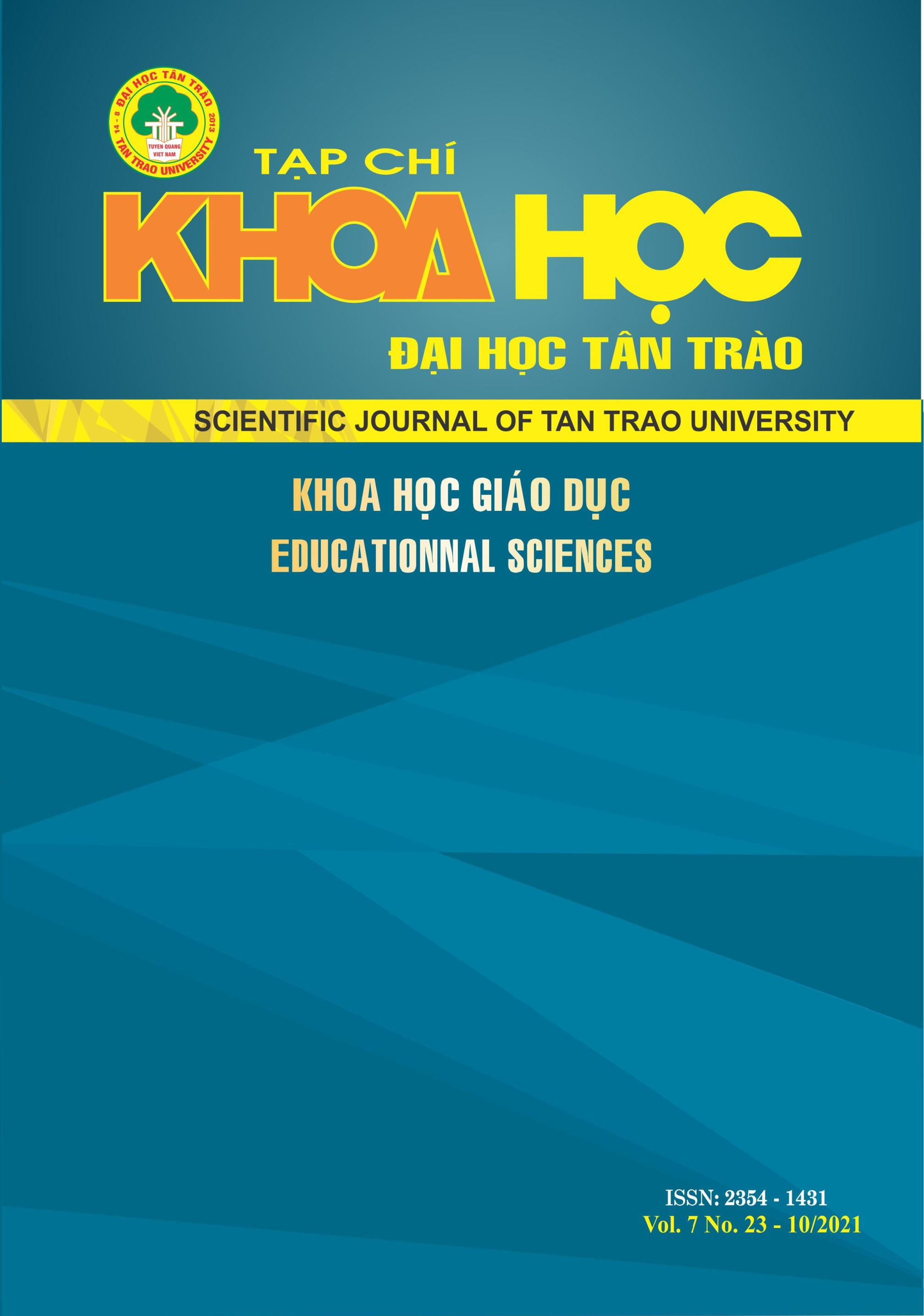THE REAL SITUATION OF CHILD VIOLENCE PREVENTION AT THE PRESCHOOLS IN LONG XUYEN CITY, AN GIANG PROVINCE
DOI:
https://doi.org/10.51453/2354-1431/2021/634Keywords:
The real situation, the violence, the child, preschool teachers, Long Xuyen city, An Giang province.Abstract
This study surveyed 58 preschool teachers working in Long Xuyen City, An Giang province to find out the current situation of violence and to offer solutions to prevent child violence. The research results show that: Child violence in preschools is mainly in physical and psychological forms with the rate of 37.7%, the reason is the hard working and psychology recognizing your child's differences. On that basis, the study proposed two groups of solutions to prevent child violence. In particular, the increasing of teachers' ethical education and practical career experience for students of pedagogy combined with other solutions in preschool is basic.
Downloads
References
[1] Hai, T. (2017). Child abuse case at Green Kindergarten Ho Chi Minh City. https://vtv.vn.
[2] Congress. (2017). Children's Law. National Political Publishing House – The Truth.
[3] Congress. (2019.). Education Law. Law No. 43/2019/QH14.
[4] Huyen, T. T. (2006). Current status of domestic violence. Workshop on Social Issues in An Giang Province, 66.
[5] Kim, D. H. (2017). Child abuse – Definition, classification and behaviour. Access from https://www.whiteheathervn.com.
[6] Phe, H. (1992). Vietnamese Dictionary. Hong Duc Publishing House, 927.
[7] Phung, N. T. K., Lan, N. T. (2009). Overview of violence and legislation on prevention and control of violence against women and children. Jurisprudence Journal 2, 3.
[8] Quy, N. T. Q., Bao, B. T. (2019). Causes of violence against private preschool children in industrial zones and the vicinity of Ho Chi Minh City. Scientific Journal of Ho Chi Minh City University of Education, 16:141.
[9] VTV News. (2016). Suffering from violence and abuse of children. https://vtv.vn
Downloads
Published
How to Cite
Issue
Section
License

This work is licensed under a Creative Commons Attribution-ShareAlike 4.0 International License.
All articles published in SJTTU are licensed under a Creative Commons Attribution-ShareAlike 4.0 International (CC BY-SA) license. This means anyone is free to copy, transform, or redistribute articles for any lawful purpose in any medium, provided they give appropriate attribution to the original author(s) and SJTTU, link to the license, indicate if changes were made, and redistribute any derivative work under the same license.
Copyright on articles is retained by the respective author(s), without restrictions. A non-exclusive license is granted to SJTTU to publish the article and identify itself as its original publisher, along with the commercial right to include the article in a hardcopy issue for sale to libraries and individuals.
Although the conditions of the CC BY-SA license don't apply to authors (as the copyright holder of your article, you have no restrictions on your rights), by submitting to SJTTU, authors recognize the rights of readers, and must grant any third party the right to use their article to the extent provided by the license.


